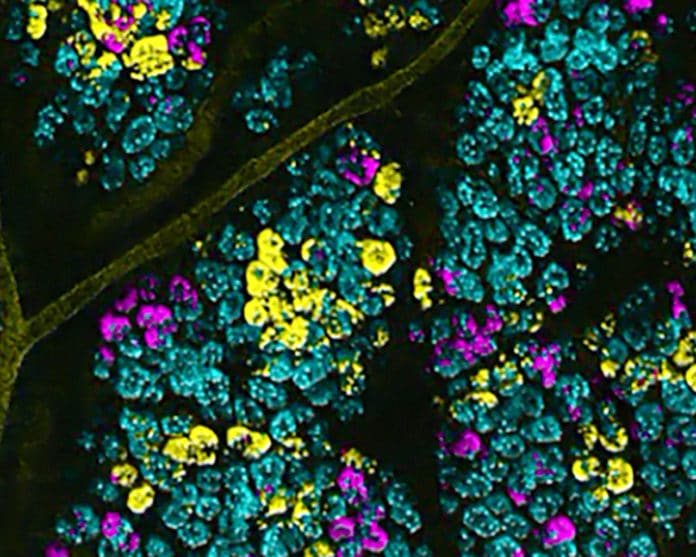Scientists from the Duke University Medical Center have observed how stem cell mutations quietly emerge and spread all through a broadening field of the colon until they eventually prevail and become a malignancy.
Scientists tried an innovative modeling system called molecular dyeing technique on mice to visually tag colon cancer mutations by causing stem cells to glow. Mutations found in colon cancer were then envisioned in the animals, enlightening a kind of tournment-to-the-death underway in the intestine in which some mutation beat the others to turn into the main impetus of a malignancy.
Joshua Snyder, Ph.D., assistant professor in the departments of Surgery and Cell Biology at Duke and corresponding and co-senior author of a study, said, “This study provides new insight into the previously invisible process in which mutant precancerous stem cells spread throughout the colon and seed cancer. Our technique sets a firm foundation for testing new therapies that interrupt this new, pre-malignant process. We hope to one day target and eliminate these stealth precancerous cells to prevent cancer.”
The technique that was applied uniquely tagged several common colon cancer mutations in the stem cells of a single tumor to create a fluorescent barcode. When transferred to a mouse, the rainbow of fluorescent stem cells could be visually tracked, revealing the cellular and molecular dynamics of pre-cancerous events.
In this way, the researchers found key differences in how the intestinal habitats typical to babies and adults grow pre-cancerous fields of mutant cells. At a critical period, newborns are sensitive to the effects of mutations within intestinal stem cells.
This insidiously seeds large fields of premalignant mutated cells throughout the intestine — a process called field cancerization — that dramatically increases cancer risk. These fields of mutated cells can grow and spread for years without being detected by current screening technologies; often, they remain harmless, but under proper conditions, they can rapidly become cancerous later in adults.
Scientists also found that some mutations can cause a striking increase in the fertility of the environment surrounding precancerous fields. At last, this prompts the rapid spread of areas throughout the intestine, with lethal outcomes.
Specific common mutations that arise from external sources, such as an injury or an environmental exposure, could also disrupt the environment surrounding the stem cell and lead to the rapid growth and spread of precancerous fields. These occurrences can be especially lethal in adults and occur much more rapidly than previously expected – as if dropping a match on a drought-stricken forest.
Synder said, “Field cancerization has been suggested to be the defining event that initiates the process of cancer growth, including cancers of the breast, skin, and lung. Our technique allows us to model how premalignant cells compete and expand within a field by simple fluorescent imaging, potentially leading to earlier diagnosis and treatment.”
“Additional studies are underway using the fluorescent barcoding to view the cancer fields in breast cancer, aiming to learn more about when malignant vs. benign mutations drive a pre-cancerous condition known as ductal carcinoma in situ.”
The study is published online in the journal Nature Communications.
